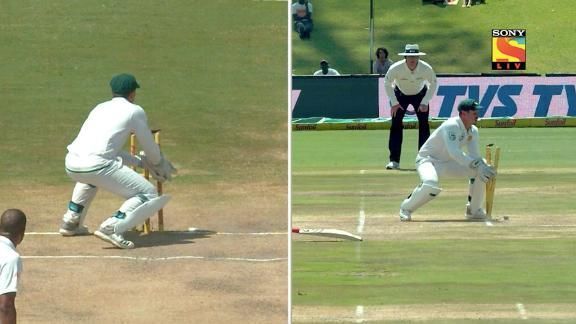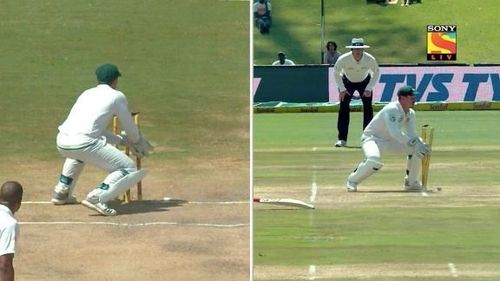
South Africa vs India 2018: Why the umpire took so long to declare Pujara out

India came out to bat on Day 5 on their overnight score of 35-3. They had already lost Virat Kohli, the centurion of the first innings. If there was any hope for India to get over the line (or save the Test match), it was pinned on the able shoulders of Cheteshwar Pujara.
Their expectations were grounded on several slender links, all of which had to click at the same time for India to deny the Proteas a victory.
If Pujara and Patel occupy the crease till Lunch. If the pitch doesn't misbehave. If Rohit gets back to scoring ways. If Pandya replicates the heroics of the first Test. If the tail wags a little more. If, above all, the fortune favours us. If all these 'ifs' had clicked, all at once, India were certainly in with a chance.
On the contrary, the first wicket India lost that opened the flood gates came in the form of a run out. Who would have imagined that Cheteshwar Pujara, the most perseverant of all Indian batsmen, would get run out twice in the match. But such is the phase that India is going through, that nothing seems to be going its way.
Pujara was seeing the ball well in the morning session. He made his positive intentions known to the Proteas when he late-cut an outswinger from Philander for four. On most days, he would have let the ball pass and deposit safely in the Keeper's gloves.But Pujara looked determined to take the attack to the opposition in this innings.
A few balls later, Parthiv Patel got a steeply rising delivery from Vernon Philander. He got on top of the ball and guided it to third man. The debutant pacer Ngidi gave the ball a chase while AB de Villiers backed him up. He was somehow successful in flicking the ball towards ABD who threw the ball towards keeper de Kock in a flash.
It is known to all and sundry that Pujara is not the quickest between the wickets. In fact, he is probably only better than Ishant Sharma in the current Indian side when it comes to fitness and agility. He has already had a couple of surgeries of his knee. However, when he suddenly decided to go for the third run, he seemed to forget all of that.
There was a certain three there but Pujara for the sake of his fitness could have done with a couple. He ran with all his might but even his full pace was not good enough for him to make the crease in time. Quinton de Kock dislodged the bails. The decision was referred.
At first sight, it appeared an open and shut case. The wickets were broken and no part of Pujara's bat was behind the line. This meant an end to the innings of the gritty right hander. But the TV umpire Richard Kettleborough took longer than usual in giving his decision.
The fact of the matter is that for the batsman to be ruled out, the bail must be completely dislodged. In this case, the bail was out of the groove of the off stump but some part of it still remained perched on the middle stump. Kettleborough took his time and once he was sure that the bail was fully dislodged, he ruled Pujara out.
After a long wait, Pujara had to eventually depart and with him departed India's hopes of showcasing a fight back.